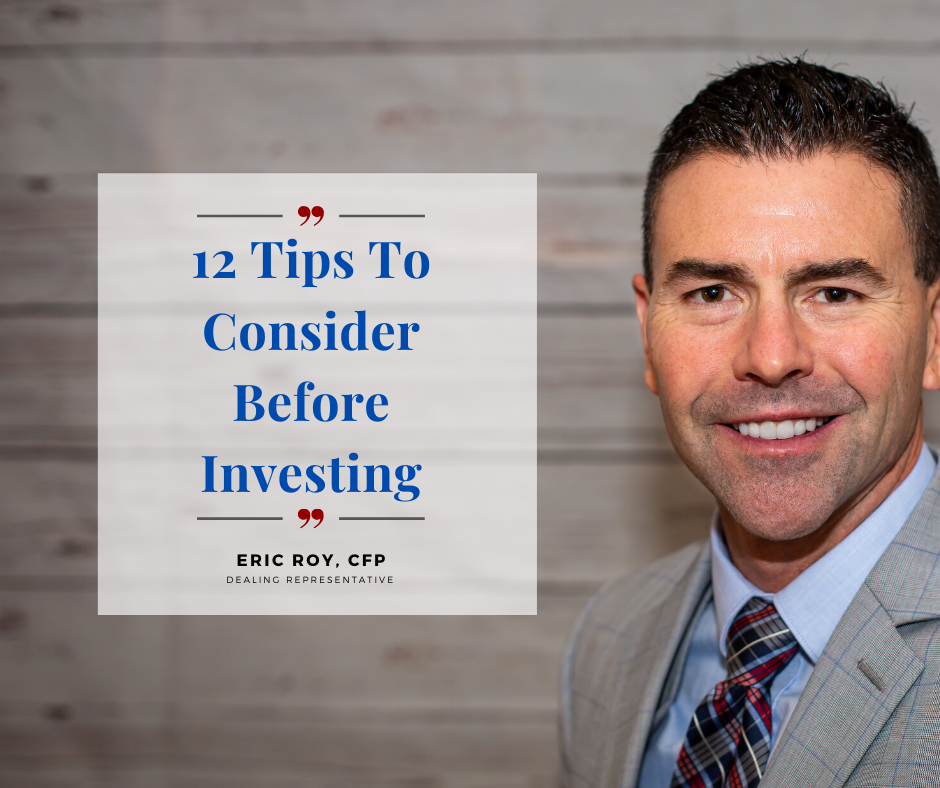Approval #20200408C
Although these 12 tips do not guarantee a successful outcome, they are a good starting point to potentially increase your chances of a successful outcome when it comes to investing. Always read the full Offering memorandum before investing.

1. TRACK RECORD

Does the company have a long track record of proven results with consistent and positive returns to the investors. Past returns are not necessarily indicative of future performance but may be a measure of the company’s longevity. If the company is a start-up, there could be added risks and many unknown factors.

2. UNDERSTAND THE RISKS

It is important to understand what the potential risks are, and how the company plans to mitigate those risks. Since every investment has some level of risks, an investor must have full disclosure on what those risks are.

3. CORPORATE-GOVERNANCE AND OVERSIGHT

Does the company conduct its business openly and with full transparency? Does the company have an independent board of directors to oversee any potential conflicts of interest, and ensure the best interest of investors remains a priority?

4. PREFERRED RATE OF RETURN,
HURDLE RATE and MANAGEMENT FEES

These are important factors to consider. A preferred rate of return (or hurdle rate) simply means that the investor must receive their preferred rate of return before the company is entitled to their share of the profits. This is an effective way to align the interest of both the investors and the owners of the company. This can also be referred to as a performance fee. It is also important to know the percentage of management fees the company charges you, as the investor, and whether this fee is subtracted from the preferred return or not.

5. PROFIT SHARING

Does the investment offering have a profit-sharing structure in place, and if so, what does it look like? Is it a profit structure favoring mostly the owners? Or is it a fair split between both the investors and the owners? How often is that profit sharing paid out? Is it annually or when the project is at completion or at exit?

6. TYPE OF INDUSTRY

Depending on the type of industry, some businesses tend to perform well regardless of economic cycles, while other businesses may be more affected. Refer to tip #1.

7. IS YOUR CAPITAL PROTECTED

Is the company securing the investment with any collateral in case of defaults or worst case scenarios? Some companies have measures in place to mitigate some of these risks, such being first position in a real estate asset, or having a General Security Agreement (GSA) on other assets such as company receivables, etc.

8. ANNUAL FINANCIAL AUDITS

Understanding how the company has performed in the past and how they are doing today can be a good indicator of their financial position. Are they highly leveraged? Do they have lots of debt? Are they growing, and are their balance sheet and financials in good order? Most successful investment companies are mandated to have their annual financial audits completed by the large firms. (i.e. KPMG, Deloitte, PWC, etc…) This increases transparency and can detect potential financial issues or problems.

9. WHO IS MANAGING THE COMPANY?

Does this business care about the quality of the people they hire to manage their company? What is their background and credentials? Do they carry themselves with high morals, ethics and values. The strength of management can make or a break a company. Knowing the character of the people who are managing the investment may contribute to a successful outcome.

10. SKIN IN THE GAME

Does the company stand to lose a lot of money if things don’t go as planned? Are they the biggest investor in the project? Are they motivated to do well and perform? Some companies do not have a high percentage of their own money in the investment and therefore do not have much to loose.

11. TAXATION

It’s not how much you make, it’s how much you get to keep. Understanding how your investment and gains are taxed is important. Are the gains taxed as pure interest, dividends, capital gains, return of capital or a mixture? Understanding the structure of the investment and how it is taxed can help in your planning and keep more money in your pocket.

12. TIME HORIZON and LIQUIDITY

Understanding the length of the investment and the redemption features are also important when planning the structure and diversification of your portfolio. Some investments have a longer time horizon (5-6 years) before you can get your principal back with the potential returns. Understanding the early redemption fees is important. Other investments have a shorter time horizon like 1 to 2 years. By staggering your investments into different time horizons, you can better manage the cash flow and also tax implications when investments come to term.




